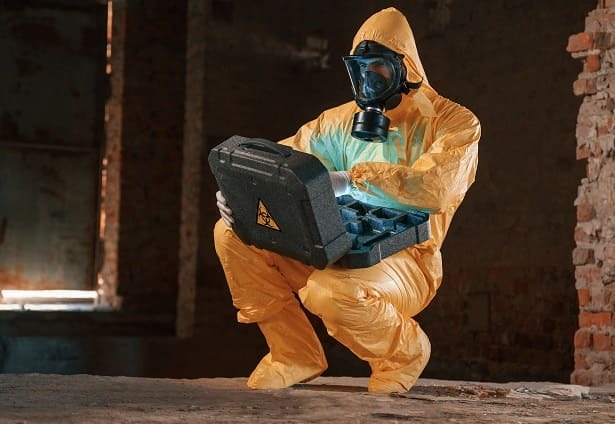
 Data Structure
Data Structure Networking
Networking RDBMS
RDBMS Operating System
Operating System Java
Java MS Excel
MS Excel iOS
iOS HTML
HTML CSS
CSS Android
Android Python
Python C Programming
C Programming C++
C++ C#
C# MongoDB
MongoDB MySQL
MySQL Javascript
Javascript PHP
PHP
- Selected Reading
- UPSC IAS Exams Notes
- Developer's Best Practices
- Questions and Answers
- Effective Resume Writing
- HR Interview Questions
- Computer Glossary
- Who is Who
What is the full form of CERN?
Introduction
European Organisation for Nuclear Research (CERN) is a research organisation primarily based in Geneva, Switzerland, that operates the world's biggest particle physics laboratory. CERN was installed in 1954 to offer a platform for scientists to collaborate on ground-breaking research projects in the fields of particle physics, nuclear physics, and accelerator technology.

CERN's primary mission is to study the essential structure of the universe with the aid of exploring the residences of particles and their interactions. CERN operates a number of particle accelerators, significantly the Large Hadron Collider (LHC), the world's most effective particle accelerator. The LHC permits researchers to discover particle characteristics and interaction at extremely high energies, providing insights into the nature of memory and the origins of the cosmos.
In addition to particle physics research, CERN is also responsible for the development of the world's massive internet. In the late 1980s, a CERN scientist named Tim Berners- Lee proposed a device for sharing records over a laptop community. This system, which became the world wide web, revolutionised the way people access and proportion data round the world.
CERN has a various international staff of scientists and engineers who collaborate on research projects and experiments on the laboratory. The organisation also hosts numerous training applications and workshops for students and early-career researchers in particle physics, helping to train the subsequent generation of scientists and engineers in this field.
History
The European organisation for Nuclear studies, usually known as CERN, was primarily based on September 29th, 1954 in Meyrin, Switzerland. It was established as a collaborative effort among European international locations to enhance scientific studies in the field of particle physics.
CERN's flagship project, the large Hadron Collider (LHC), was finished in 2008 and is one of the world's biggest and most effective particle accelerators. It has allowed scientists to make groundbreaking discoveries in the observation of essential particles and the nature of the universe.
Through the years, CERN has additionally been instrumental in the development of various technologies, which incorporates the world's extensive web. In reality, the first website was created at CERN through the use of Tim Berners-Lee in 1990. nowadays, CERN has 23 member states and is still at the leading edge of clinical research.
Working of European Organization for Nuclear Research
Here are some key aspects of how CERN operates
Member States CERN currently has 23 member states, primarily from Europe, however additionally along with Israel. Each member state contributes financially to CERN's research applications, and their scientists have access to CERN's facilities and assets.
Research programs CERN's studies programs are centred on particle physics and related fields, such as accelerator and detector technology. The large Hadron Collider (LHC) is the centrepiece of CERN's research application, and it is used to accelerate particles to high energies and smash them together, allowing scientists to study the resulting particle interactions.
Collaborations CERN collaborates with many different research institutions around the world on various research tasks. As an instance, CERN collaborates with Fermilab in the USA at the CMS experiment, which researches the properties of the Higgs boson particle.
Open science CERN is committed to open science and makes its research results and information available to the wider medical community. This permits researchers from around the world to investigate the facts and contribute to the advancement of particle physics and related fields
Impact
The impact of the European Organization for Nuclear Research (CERN) has been significant in several areas, including
Scientific Discoveries CERN has been at the forefront of many ground-breaking discoveries in the place of particle physics, which includes the invention of the Higgs boson in 2012. These discoveries have helped strengthen our understanding of the essential building blocks of the universe.
Technological improvements CERN has been instrumental in the development of various technologies, which include the world wide web, which was invented by Tim Berners-Lee while working at CERN in 1989. In addition, the improvement of the large Hadron Collider (LHC) has required the creation of numerous technologies and has driven advances in accelerator and detector technology.
Training and Outreach CERN has a strong commitment to education and outreach, providing academic resources, web hosting student programs, and engaging with the public through events and exhibitions. CERN's outreach efforts inspire the next generation of scientists and foster clinical literacy among the majority.
International Collaboration CERN's collaborative model brings together scientists and researchers from around the sector, permitting them to work together on shared scientific goals. This worldwide collaboration permits to ruin down obstacles and fosters international medical cooperation.
Advantages and disadvantages
Here are some advantages and disadvantages of the European Organization for Nuclear Research (CERN)
Advantages
scientific advancements CERN has made significant scientific improvements in the subject of particle physics, assisting us better understand the essential nature of the universe.

Collaborative research CERN brings collectively scientists from distinctive countries and institutions to paintings on shared clinical goals, fostering collaboration and innovation.
Technological Innovation CERN has been instrumental in the improvement of diverse technology that have had packages beyond particle physics, along with medical imaging.
Education and Outreach CERN has a strong commitment to education and outreach, imparting academic resources and hosting scholar applications, which help encourage the subsequent generation of scientists.
Disadvantages
Cost the construction and operation of large-scale research facilities such as CERN may be expensive, and the economic burden falls primarily on member states.
Environmental impact The operation of large-scale studies centres can have an enormous environmental impact, which include increased power consumption and waste technology.
Limited focus CERN's studies focus typically on particle physics, which won't be a priority for all member states or align with all scientific goals.
Competition for assets The limited availability of funding and assets can result in opposition among research institutions and projects, which may limit collaboration and cooperation.
Conclusions
In conclusion, the European organisation for Nuclear research (CERN) has been a significant contributor to the field of particle physics, driving scientific advancements and technological improvements, fostering collaboration and education, and promoting global scientific cooperation. While there are some dangers to large-scale studies facilities like CERN, the benefits outweigh the costs, and the effect of CERN's studies extends beyond particle physics, with applications in fields such as medical imaging. As we continue to discover the mysteries of the universe, it is important that we invest in institutions like CERN to enhance our understanding of the fundamental nature of the universe, encourage future generations of scientists, and pressure innovation and development.
FAQs
Q1. How is CERN funded?
Ans: CERN is primarily funded by its member states, which currently number 23.
Q2. What is the World Wide Web and how is it related to CERN?
Ans: The World Wide Web was invented by Tim Berners-Lee while working at CERN in 1989. Berners-Lee developed the first web browser and web server, which enabled the sharing of information over the internet.
Q3. What is CERN doing to promote education and outreach?
Ans: CERN has a strong commitment to education and outreach, providing educational resources and hosting student programs, as well as engaging with the public through events and exhibitions.

